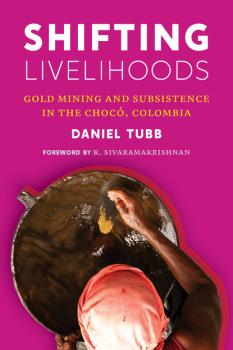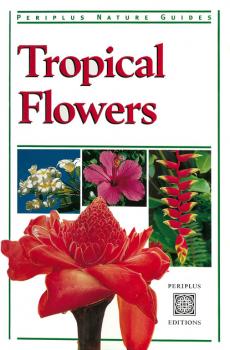Биология
Различные книги в жанре БиологияMaking Wooden Fishing Lures
Get Caught Up In Eleven Easy To Follow Lure Projects Making a usable fishing lure from a scrap of wood and some paint is a fun and easy project for anyone who enjoys fishing, carving, or collecting. Award-winning carver and fishing enthusiast Rich Rousseau likes to do them all, so he decided to share his fish-tested designs for creating a variety of fresh and saltwater lures. Divided into three main chapters, Making Wooden Fishing Lures, covers everything you need to know about wood, types of lures, extra options to add to your lure, how to dress a hook, and full-sized bonus patterns to develop your skills. Along with the wonderful lures you can make yourself, you will be reeled in by the full-color gallery of historic and contemporary wooden lures, accompanied by an introduction from top collector Butch Bartz. Rousseau's love of lure making and fishing in general is evident in the Fun Fish Facts and entertaining stories that are littered throughout the book.
Shifting Livelihoods
People employ various methods to extract gold in the rainforests of the Chocó, in northwest Colombia: Rural Afro-Colombian artisanal miners work hillsides with hand tools or dredge mud from river bottoms. Migrant miners level the landscape with excavators, then trap gold with mercury. Canadian mining companies prospect for open-pit mega-mines. Drug traffickers launder cocaine profits by smuggling gold into Colombia and claiming it came from fictitious small-scale mines.Through an ethnography of gold that examines the movement of people, commodities, and capital, Shifting Livelihoods investigates how resource extraction reshapes a place. In the Chocó, gold enables forms of “shift” ( rebusque )—a metaphor for the fluid livelihood strategy adopted by forest dwellers and migrant gold miners alike as they seek informal work amid a drug war. Mining’s effects on rural people, corporations, and politics are on view in this fine-grained account of daily life in a regional economy dominated by gold and cocaine.
Where Land and Water Meet
Water and land interrelate in surprising and ambiguous ways, and riparian zones, where land and water meet, have effects far outside their boundaries. Using the Malheur Basin in southeastern Oregon as a case study, this intriguing and nuanced book explores the ways people have envisioned boundaries between water and land, the ways they have altered these places, and the often unintended results.The Malheur Basin, once home to the largest cattle empires in the world, experienced unintended widespread environmental degradation in the late nineteenth and early twentieth centuries. After establishment in 1908 of Malheur National Wildlife Refuge as a protected breeding ground for migratory birds, and its expansion in the 1930s and 1940s, the area experienced equally extreme intended modifications aimed at restoring riparian habitat. Refuge managers ditched wetlands, channelized rivers, applied Agent Orange and rotenone to waterways, killed beaver, and cut down willows. Where Land and Water Meet examines the reasoning behind and effects of these interventions, gleaning lessons from their successes and failures.Although remote and specific, the Malheur Basin has myriad ecological and political connections to much larger places. This detailed look at one tangled history of riparian restoration shows how�through appreciation of the complexity of environmental and social influences on land use, and through effective handling of conflict�people can learn to practice a style of pragmatic adaptive resource management that avoids rigid adherence to single agendas and fosters improved relationships with the land.
Improving rumen function
Major advances in analytical techniques and genomics have transformed our understanding of rumen microbiology. This understanding is of critical importance to livestock production since rumen function affects nutritional efficiency, emissions from ruminants (such as methane and nitrous oxide) as well as animal health. This collection reviews what we know about rumen microbiota and the role of nutritional strategies in optimising their function for more sustainable livestock production. <br><br>Part 1 summarises advances in methods for analysing the rumen microbiome. Part 2 reviews recent research on the role of different types of rumen microbiota such as bacteria, archaea, anaerobic fungi, viruses and the rumen wall microbial community. Part 3 discusses the way the rumen processes nutrients such as fibre and protein as well as outputs such as energy, lipids and methane emissions. Part 4 explores nutritional strategies to optimise rumen function, including the role of pasture, silage, cereal feed, plant secondary compounds and probiotics.
Diving in Indonesia
Diving in Indonesia is a fully comprehensive diving guidebook for exploring the most notable areas of Indonesia. A chapter is devoted to each of the following important regions in Indonesia for divers: Bali North Sulawesi Central, South and Southeast Sulawesi Nusa Teggara (Lombok, Komodo, Timor, Alor) Raja Ampat & West Papua Maluku (Ambon, Banda & Halmahera) Each chapter relates to a different region and provides the reader with area maps, dive site maps, diving information which includes: Difficulty level highlights Logistics General area information General diving information Detailed dive site descriptions Useful diving contacts such as emergency services and emergency diving services, liveaboard diving, marine life features, conservation features and travel planners are included, making this a complete diving guide. There are also sections regarding general travel practicalities in Indonesia, general diving practicalities in Indonesia, a basic Indonesian dictionary and phrases specifically relating to diving.
Photographic Guide to the Birds of Thailand
Tuttle is proud to present the very first comprehensive photographic guide to the birds of mainland Southeast Asia, the Philippines and Borneo. Included are the birds of Peninsular Malaysia, Thailand and Indochina, as well as those found in South China, Hong Kong and Taiwan.This book covers 668 species and contains more than 700 colour photographs. There is a distribution map for each species.Many of the photographs in this magnificent volume appear for the first time and have been carefully selected to show the most important species. The concise text provides vital information that will ensure accurate identification of species in one of the world's most diverse avifauna regions. Indispensable reading for all bird lovers.
Tropical Flowers
This handy field guide introduces 55 tropical plant species. Each exotic bloom is described in detail, its history of origination is discussed and gardening tips are given. There is a wealth of botanical detail, as well as fascinating information on the cultural uses of flowers. An indispensible guide to both common and unusual plants, the book is illustrated with over 120 beautiful color photographs. Clearly presented for easy identification, Tropical Flowers is a «must» for gardeners and non-gardeners alike.
Tropical Birds
This handy birdwatching field guide is an excellent introduction to the fantastic array of birds found in Southeast Asia.Southeast Asia is home to a remarkable array of bird species—the most diverse on Earth. These birds range in size from the tiny Orange-bellied Flowerpeckers living within the rainforest, to massive White-bellied Sea-Eagles. They vary in color from drab, olive babblers, to exquisitely-hued kingfishers.This bird guide features 96 typical species and clearly describes their special characteristics. Many are easy–to–find birds adapted to living around cities and towns, while others can be seen in nature reserves. Illustrated with over 100 beautiful color photographs, showing the birds in their natural habitats, this book will delight both keen bird watchers and beginners alike. Common as well as scientific names are given for each bird.
Catch Up Biology, second edition
Catch up Biology covers the basic principles and concepts in biology that you will need if you are studying medicine or a related subject, or one of the biomedical sciences. The book focuses on human biology and covers: * the basic molecules of life, such as proteins, carbohydrates, nucleic acids * cells, tissues and processes, including energy metabolism, cell division, epithelial and connective tissues * the key mammalian systems, for example, homeostasis, the endocrine, respiratory and digestive systems. Throughout the book the authors highlight clinical examples so that you can see the relevance of basic biology to your course. The book also contains questions (and answers) so that you can test your understanding of the subject as you work through the book. This new edition features two new chapters on microorganisms and on genetic disease. Catch up Biology is the ideal book to refresh your understanding of the basic concepts of biology.
Conservation’s Roots
The ideas and practices that comprise “conservation” are often assumed to have arisen within the last two centuries. However, while conservation today has been undeniably entwined with processes of modernity, its historical roots run much deeper. Considering a variety of preindustrial European settings, this book assembles case studies from the medieval and early modern eras to demonstrate that practices like those advocated by modern conservationists were far more widespread and intentional than is widely acknowledged. As the first book-length treatment of the subject, Conservation’s Roots provides broad social, historical, and environmental context for the emergence of the nineteenth-century conservation movement.









